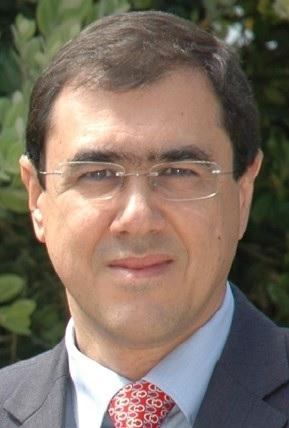
Electronic citizen-centered electronic data exchange for personalized digital health
Ricardo Jardim-Goncalves
The advent of globalization envisions people and systems without any barriers in their interaction, capable of communicating and understanding in a complete way independent of the language, methods or infrastructures used. The present digital age adds a whole diversity and heterogeneity of data and services, creating a global system with a higher level of complexity with the need to become interoperable. Its implementation will lead to a stage in which globalization comprehensively embraces the digital world that dominates the world economy. The keynote addresses the fundamental role of interoperability to achieve top value Digital Health in the context of complex measurements for citizens in sensors networks and IoT to enable the citizens to manage and bridge their own health data throughout the EU and beyond, advancing own and societal health and wellbeing in an ecosystem of sensor networks for the wellbeing of man. This will empower citizens to manage their own health more proactively and effectively., to support healthcare professionals to deliver high quality, consistent and efficient healthcare, and assist governments and healthcare providers in increasing access or managing epidemics.
Ricardo Jardim-Goncalves holds a PhD degree and received his habilitation (Agregação) in Industrial Information Systems by the NOVA University of Lisbon (UNL). He is Full Professor at the New University of Lisbon, Faculty of Sciences and Technology, and a Principal Investigator at UNINOVA – Instituto de Desenvolvimento de Novas Tecnologia. He has graduated in Computer Science, with MSc in Operational Research and Systems Engineering. His research activities have been focused on Interoperability of Complex Systems. He has been researching in European Commission funded projects during the last 30 years, with more than 200 papers published in conferences, journals and books. He directes GRIS (GRupo para a investigação em Interoperabilidade de Sistemas; Group for Research in Interoperability of Systems) at UNINOVA (Instituto para o Desenvolvimento de Novas Tecnologias), CTS (Centro para as Tecnologias e Sistemas). He has a relevant standardization activity acting as member of the Planning and Policy Committee and project leader in ISO TC184/SC4.

ST Environmental Sensors and Main Applications
Giuseppe Bruno
STMicroelectronics
- 2010-now: Innovation Product (Environmental and Optical sensors, Bio-Potential acquisition system) DESIGN MANAGER at STMicroelectronics s.r.l. – AMG R&D, Catania, Italy
- 2007-2009: OpAmp, Battery charger, Audio DAC, Very high precision Vref development Manager at R&D at STMicroelectronics s.r.l. – AMPS division, Catania, Italy
- 2003-2007: Cellular Front End Module Design Manager at STMicroelectronics s.r.l. – HPC division, Catania, Italy
- 2000-2003: Power Amplifier Front End Module Design Leader at STMicroelectronics s.r.l. – R&D Organization, Catania, Italy
- 1998-2000: Senior RF designer at STMicroelectronics s.r.l. – R&D Organization, Catania, Italy
- 1995-1998: Power Bipolar designer at STMicroelectronics s.r.l. – Power Group, Catania, Italy
Expertise in Environmental Sensor Products with know how in Piezo Resistive and Capacitive Pressure sensor, Capacitive Humidity sensor, High Accuracy Temperature sensor, Gas sensor for Indoor and Outdoor Air quality monitor as well as Particle sensors, UV Index sensor for health care and uncooled IR sensors using innovative Nano Machined CMOS Transistors sensing techniques and processes for Motion and Presence detection sensors and contactless temperature sensors.

(Air)space is the Final Frontier: Experiments with Learning, Sensing and Communications in UAVs.
Prof. Kaushik Chowdhury
Northeastern University, USA
- Prof. Kaushik R. Chowdhury received the PhD degree from the Georgia Institute of Technology, Atlanta, in 2009.
- He is currently Associate Professor and Faculty Fellow in the Electrical and Computer Engineering Department at Northeastern University, Boston, MA.
- He was awarded the Presidential Early Career Award for Scientists and Engineers (PECASE) in Jan. 2017 by President Obama, the DARPA Young Faculty Award in 2017, the Office of Naval Research Director of Research Early Career Award in 2016, and the NSF CAREER award in 2015.
- He received multiple best paper awards, including the IEEE INFOCOM conference in 2018, ICC conference, in 2009, ’12 and ’13, and ICNC conference in 2013.
- His works have gathered over 10,200 citations.
- His current research interests include machine learning for radios, networking for unmanned aerial systems, wireless RF energy harvesting and IoT and in the area of intra/on-body communication.
- He is a co-director for the Platforms for Advanced Wireless Research project office, a joint $100 million public-private partnership between the US National Science Foundation and a wireless industry consortium to create city-scale testing platforms.
The rapid growth in the deployment of unmanned aerial vehicles (UAVs) opens up new paradigms for spectrum sensing, RF actuation, and air-ground communication. In this talk we will cover, from an experimental viewpoint, the challenges in creating intelligent and coordinated UAV swarms that are synchronized in their operation. We will first begin with demonstrating how deep learning on RF signals can be utilized on the UAVs for device identification from the air. Once specific friendly radios are securely authenticated, we will show that UAVs can be clustered for distributed beamforming, with tight constraints on timing and awareness of channel state information. Finally, we shall describe a method that ensures completely jamming resilient air-ground control channels using a combination of mmWave radar sensing of UAV locations. We show, through an exhaustive set of measurements and validation on DJI M100/M600 UAVs and Ettus software defined radios, why these are are difficult problems, given the continuous hovering-related fluctuations, the need to ensure timely feedback from the ground receiver given the channel coherence time, and the size, weight, power and cost (SWaP-C) constraints for UAVs. The talk will also highlight open problems in this exciting new area of aerial networked robotics.



